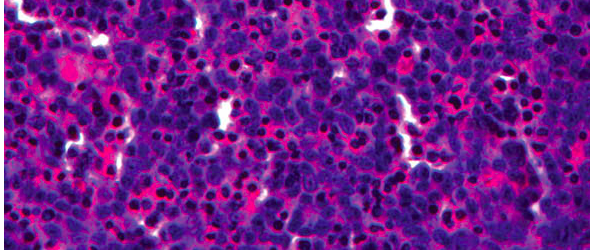Next week IdeaCity comes back to Toronto for another three days of “smart people talking about big ideas.” Every year the audience listens as the world’s most renowned thinkers and personalities present on topics that will impact the way people live and behave and the way business will operate in the near and distant future.
One of the featured speakers this year is Gabor Forgacs. Forgacs is a biophysicist -turned-entrepreneur. Today, his companies are taking advantage of 3D technologies. He and his teams are printing tissues for medicine and pharma, as well as for consumptions, such as leather and meat. Yes, meat.
We had the opportunity to recently interview Forgacs on his journey from scientist to business-person:
ITBusiness: You started your career as a trained scientist. You are now an entrepreneur. Why did you feel becoming an entrepreneur was a natural progression in your journey?
Gabor Forgacs: It was not natural at all. It never is for a scientist (I guess), which I still believe I am fundamentally. It was due to serendipity and the nudging of my entrepreneur son. We cofounded both companies (Organovo and Modern Meadow) together.
The idea and concept of 3D printing is fast becoming understood by Canadians and Canadian businesses. What fascinates you about the “recent” 3D printing phenomenon?
It is the most economical manufacturing process we have come up so far with practically no waste. This statement applies strictly speaking to the non-biological applications of 3D printing. The biological applications, where I have been involved, is another matter as it has no manufacturing analogue. It does have all the advantages of 3D printing in general (speed, precision, etc.) but needs additional elements stemming from the nature of the application (sterility, handling of living material, etc.). For me it represents the easiest way to build extended (3D) living biological structures (tissue, organ structure).
Although we’ve recently heard about patients receiving 3D printed “tools” to help alleviate physical ailments, is this still far away to be accessible on a mass scale in community hospitals?
Printed tools sounds bizarre. I’d say printed components/parts (jaw, trachea). Applications so far do not involve living material (only scaffolds, fillers). It will take a while before 3D living structures, such as tissues and organs will be printed on a mass scale. But it will happen in our lifetime.
Tell us a little bit about Organovo and Modern Meadow and the problems they’re looking to tackle and solve.
At present Orhanovo (Forgacs is no longer operating Orhanovo on a day-to-day basis but is working with them as a consultant) is focussed on building physiologically relevant tissue constructs for patient-tailored applications in drug testing and development. This has incredible potential, as drugs can be tested on say functional liver tissues built from the patient’s own cells (thus patient tailored). It could eliminate the need for animal trials and save millions/billions in the process of developing a drug. See their latest announcement about the printed liver tissue.

Modern Meadow was launched in November 2011 to extend our tissue building expertise and activity beyond regenerative medicine. Modern Meadow is focused on animal products, in particular, among others, leather and meat. Industrially these are coupled , both originate from the slaughter houses. Both industries are very resource intensive (water, land, energy), polluting and ethically questionable (killing animals). It is widely believed that present day industrial meat production is not sustainable on the long run. If we can build medical grade tissues we should be able to build the ones that give rise to leather and meat as well.
Whereas for Organovo the challenge is building tissues/organs that eventually will be implanted into humans, for Modern Meadow the challenge is scale: The need to come up with millions of square meters of leather and tons of meat. In the case of meat, consumer acceptance is another challenge. Thus we first focus on leather as the technology to build. If leather is accepted, we hope, the idea of cultured meat will be easier to sell. The implications of Modern Meadow’s activity could be even more far-reaching than those of Organovo. Modern Meadow will be producing leather/meat at a fraction of the resources needed for the industrial production of these. In addition there is no need to kill animals. We have already produced leather that is starting to be used by the fashion industry.
You worked with human issue with Organovo. Now you’re tackling leather and meat with Modern Meadow. Why the switch?
I am not switching, just applying my expertise to something else, notably tissue engineering beyond regenerative medicine. The implications of being able to build animal products, such a leather or meat (also originating from tissue) with much less need for precious resources (land, water, energy, etc), less harm to the environment, without killing animals, all under one roof and controlled conditions are mind boggling. This is an incredibly challenge and rewarding if we succeed. And we will.
Where do you see the future of 3D printing going? What products will be popular? What products will be “life-changing”? Will individuals be able to print their own tools, body parts, clothing and possibly food?
As said, 3D printing is a paradigm shifting manufacturing technology. Its full implications are hard to grasp at this time. But your list is for sure realistic. However there is one point that needs to be stressed. 3D printing is a process that uses a clever device (the 3D printer) built by us. That’s it and no more. It is not a miracle it is not something God has given us. It can do what we teach the device to do. Thus hailing it as panacea for everything is not the right thing to do. It will certainly facilitate our life but again it will be up to us how we use this technology to our advantage. And the distinction between biological and non-biological applications must be kept in mind.





